Where’s the Yield?
In recent years, many investors have targeted regular income and low risk by investing in qualitative bonds, such as government bonds and investment grade corporate bonds. With interest rates at rock-bottom levels, investors are seeing very little yield and having a hard time realizing investment goals with this strategy but the need for regular monthly income in retirement hasn’t changed. The team discusses how a strongly diversified portfolio can potentially deliver better results with the right balance between market risks and opportunities. That balance can, for instance, be found in total return strategies that combine price-appreciation and income.
Listen on Apple Podcasts or watch on YouTube:
SUMMARY
Where’s the yield?
In the 1970’s, yields on the US government treasuries were in the 10-15% range. Today the yield is at .8% before transaction charges, taxes and inflation. The low yield environment can be explained by the little to no inflation environment we are currently in. The U.S. inflation rate has been below the Fed’s 2 percent inflation target since 2012.
Alan Greenspan, then chairman of the Federal Reserve, stated in testimony before the U.S. Congress in 2005: “The past decade of low inflation and solid economic growth in the United States and in many other countries around the world … is attributable to the remarkable confluence of innovations that spawned new computer, telecommunication, and networking technologies, which, especially in the United States, have elevated the growth of productivity, suppressed unit labor costs, and helped to contain inflationary pressures.”
His idea, echoing the voices of many other economists, is that technological advancement has brought down the price of goods that use new technologies intensively. Indeed, innovation of smart electronic gadgets like smartphones has reduced the demand for various other gadgets, exemplified by the fact that the smartphones today can provide better cameras than professional equipment a decade ago. According to the U.S. Bureau of Labor Statistics, prices of general tuition and medical care have risen 29 percent and 25 percent, respectively, while prices of television and photographic equipment have decreased 73 percent and 24 percent, respectively, since 2010.
Arguably, technological advancement has also increased labor productivity, therefore reducing unit labor cost. With the help of easily accessible information, improved communication, and useful software/applications, it is not too hard to imagine that the recent advances in technology have contributed to improved productivity.
While there is no consensus on the exact definition of the term, the sharing economy usually refers to the idea of a crowd-based market that allows the exchange of privately owned goods and services. Airbnb and Uber are prime examples of the sharing economy. Although it is not easy to see this in the official productivity statistics, it is clear that the rise of the sharing economy has improved productivity by allowing for the utilization of otherwise idle goods and services, which then has led to the reduction in prices. An aging population and globalization are also contributing factors to the lack of inflation. So how do we maximize yield in this low rate environment?
When it comes to your finances, we recommend always keeping an emergency savings fund in a bank account. Average returns on a FDIC savings account are in the .7%-.8% APY range.
In terms of your portfolios, those who have struggled to grow their money in the low interest rate environment over the past decade have mainly been retirees and others who invest for income. Money market interest continues to be virtually non-existent and yields on other traditional income vehicles, such as CDs, remain low. As these investors seek ways to meet their income needs, it is helpful for them to understand the concepts of both yield and total return.
Yield is defined as the income return on investment. This refers to the interest or dividends received from a security and is usually expressed as an annual percentage based on the investment’s cost, its current market value, or its face value.
Total return includes interest, capital gains, dividends, and distributions realized over a given period of time. In other words, the total return on an investment or a portfolio includes both income and appreciation.
One major benefit of using a total return approach is the ability to spread your portfolio across a wider variety of asset classes that can actually reduce overall portfolio risk. This has several benefits for investors. It allows them to control where the income-producing components of their portfolio are held. For example, they can hold income-generating vehicles in tax-deferred accounts and those geared towards price appreciation in taxable accounts.
This approach also allows investors to determine which holdings they will tap for their cash flow needs. For example, after a period of solid market returns, it might make sense to take some long-term capital gains as part of the rebalancing process.
Investors should understand the key differences between yield and total return so their portfolios are constructed to meet income-generating needs while providing a level of growth for the future.
Dividend Aristocrats
A Dividend Aristocrat is a company in the S&P 500 that has paid and increased its base dividend every year for at least 25 consecutive years. S&P Dow Jones Indices, which owns the S&P 500 index, reviews the list of qualifying companies every year and updates the list of companies that carry Dividend Aristocrat status. Their impressive track records of dividend growth make Dividend Aristocrats some of the most attractive dividend stocks to own. These are thought to be some of the most high quality dividend growers in the market. However, your portfolio still needs to be diversified with growers and value stocks. When you add to this, fixed income you have total return investing. For retirees, we keep portfolios with two years of cash in reserves to pay the monthly retirement needs. This way you are not selling anything during downturns to make cash payments.
Chasing yield
There are varying yield rates and riskiness with the three different bond types: US government bonds, municipal bonds and corporate bonds. With US government, the yields are typically lower because there is less risk associated with government bonds.
The next risk level is municipal bonds. These are based off of local tax revenue and carry a bit more risk. In the short term, municipalities will be hurt the worse from Covid-19 due to lower tax values collected.
The next level is corporate bonds. The yield is higher because the risk is higher. The higher the yield is usually explained by higher risk. Investors must be careful because the higher yield could mean volatility. If you are chasing yield and we have a major market sell-off, your bond portfolio could perform similarly to a stock portfolio.
If you want to see your wealth grow, you need to diversify your fixed income portfolio, adjusting it to reflect the market and interest-rate outlook. A strongly diversified portfolio can potentially deliver better results with the right balance between market risks and opportunities.
That balance can, for instance, be found in total return strategies that combine price-appreciation and income. Without price-appreciation, your potential wealth growth might not be satisfactory.
Benefit from different asset classes with a flexible approach:
You should consider investing in a flexible strategy that also targets opportunities across asset classes other than bonds.
In order to achieve higher long-term income, a stronger portfolio diversification and dynamic investment approach is needed. Financial markets offer a wide range of asset classes that offer higher or lower returns, depending on the market circumstances.
Flexible target return solutions continuously adapt the asset allocation to generate a regular income, taking into account a clients personal risk profile.
Share This Story, Choose Your Platform!
Wiser Wealth Management, Inc (“Wiser Wealth”) is a registered investment adviser with the U.S. Securities and Exchange Commission (SEC). As a registered investment adviser, Wiser Wealth and its employees are subject to various rules, filings, and requirements. You can visit the SEC’s website here to obtain further information on our firm or investment adviser’s registration.
Wiser Wealth’s website provides general information regarding our business along with access to additional investment related information, various financial calculators, and external / third party links. Material presented on this website is believed to be from reliable sources and is meant for informational purposes only. Wiser Wealth does not endorse or accept responsibility for the content of any third-party website and is not affiliated with any third-party website or social media page. Wiser Wealth does not expressly or implicitly adopt or endorse any of the expressions, opinions or content posted by third party websites or on social media pages. While Wiser Wealth uses reasonable efforts to obtain information from sources it believes to be reliable, we make no representation that the information or opinions contained in our publications are accurate, reliable, or complete.
To the extent that you utilize any financial calculators or links in our website, you acknowledge and understand that the information provided to you should not be construed as personal investment advice from Wiser Wealth or any of its investment professionals. Advice provided by Wiser Wealth is given only within the context of our contractual agreement with the client. Wiser Wealth does not offer legal, accounting or tax advice. Consult your own attorney, accountant, and other professionals for these services.





